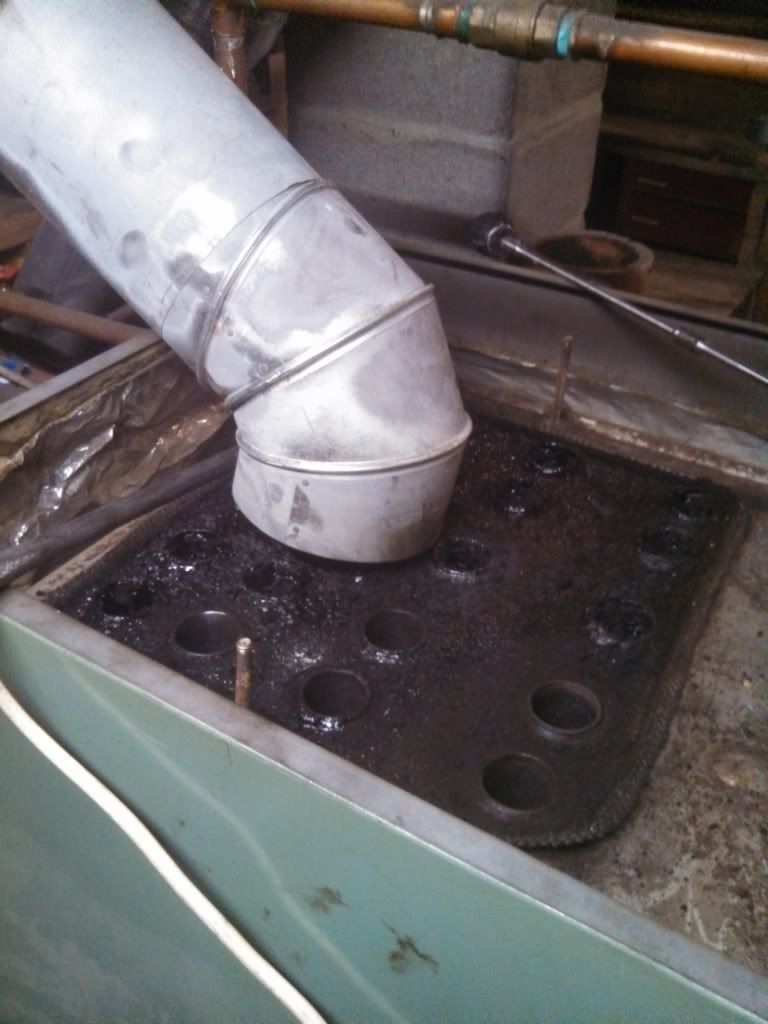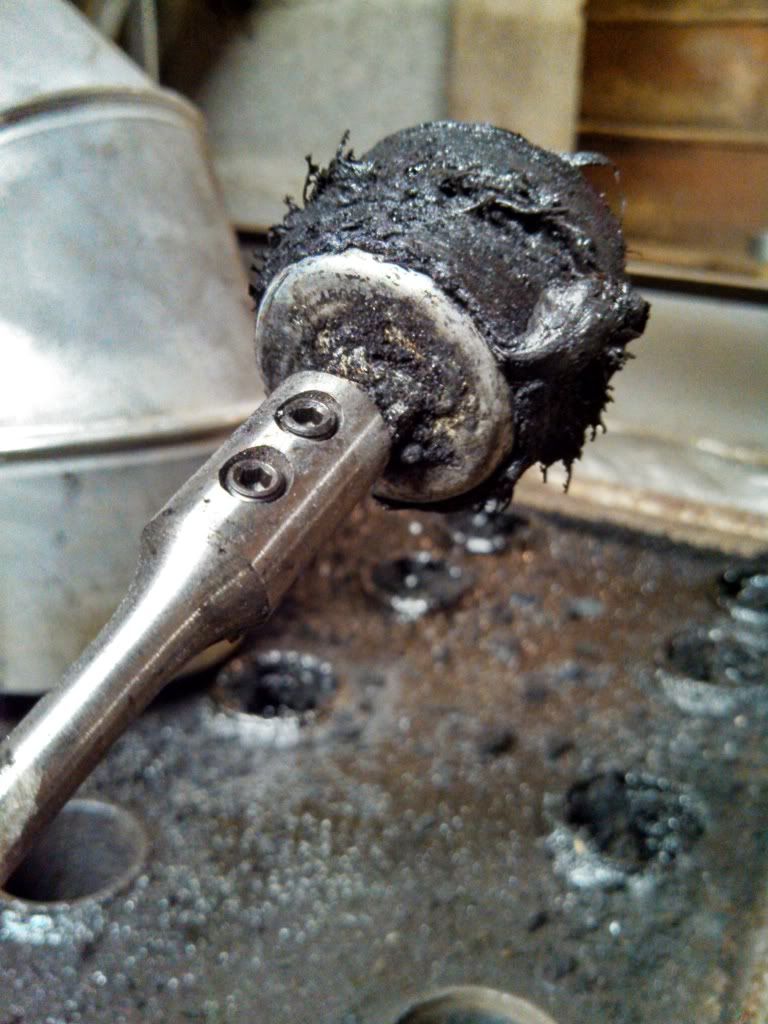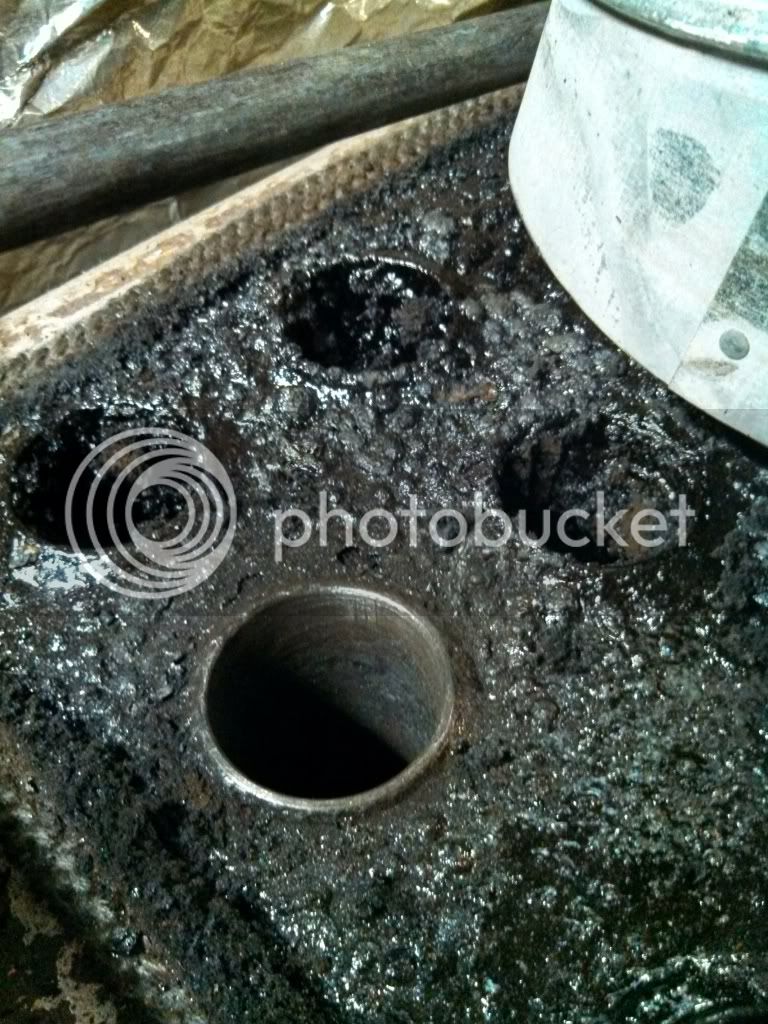04titanse
ArboristSite Operative
I am having an issue with my boiler plugging up and not being able to get it clean enough. Its an older wood boiler and is set up to work with my oil boiler.
I have been burning a fair bit of cut up pallets as all my wood has been buried in deep snow. The pallets are dry and most are SPF but some hardwood. I ordered a 1.75" boiler brush, but this build up is so tough I am not sure its going to do a damn thing.
I ground down a wire wheel for a drill and put two 12" extension and that works pretty ok but after clearing 5-6 tubes its totally gummed up. Only thing I can think to do is get 5-6 more wire wheels and soak the gummed up ones in diesel to clean them and keep rotating. It seems there is some real hard crusty stuff stuck to the steel tubes but the stuff that is blocking it up it much gummier. I am guessing the stuff stuck the steel is older build up, since I never had the right sized brush it never got super clean.




I have been burning a fair bit of cut up pallets as all my wood has been buried in deep snow. The pallets are dry and most are SPF but some hardwood. I ordered a 1.75" boiler brush, but this build up is so tough I am not sure its going to do a damn thing.
I ground down a wire wheel for a drill and put two 12" extension and that works pretty ok but after clearing 5-6 tubes its totally gummed up. Only thing I can think to do is get 5-6 more wire wheels and soak the gummed up ones in diesel to clean them and keep rotating. It seems there is some real hard crusty stuff stuck to the steel tubes but the stuff that is blocking it up it much gummier. I am guessing the stuff stuck the steel is older build up, since I never had the right sized brush it never got super clean.





























































